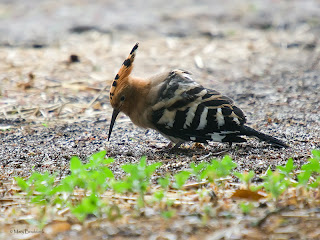




This was a photographic week organised with Balazs, from Ecotours Wildlife Holidays http://ecotourswildlife.co.uk/. The view from our lodge over the marsh at Tiszaalpar was amazing with hundreds of different herons, spoonbills and pygmy cormorants. With a black woodpecker, tree sparrows, long-eared owl, hobby, sparrowhawk, quail, golden oriole, barred warbler and cuckoo for company in the garden it was likely to be a good week.
An evening drive to the white-winged black tern colony also gave a great flying display of a family of 5 sakar falcons. Early morning photo opportunities from “Hide 1” deep in the marsh included spoonbills, whiskered terns, little-ringed plover, common sandpiper, great white egrets, night herons, greenshank, black-winged stilts, pygmy cormorants and a young yellow wagtail that eventually joined us inside the hide!
We took an early morning journey to Utassy Gyuri, the man with the roller and bee-eater hides. We got amazing pictures but his can be found at http://ugyfoto.uw.hu/pixelpost/index.php?x=browse Our journey home took a detour round a red footed falcon site and it was worth noting that there were 10 kestrel chicks and 5 red foot chicks all in the same group of trees..the food source must be tremendous on the puszta plains of Hungary.
We were taken to the other side of Budapest to Palankai Zsolt with the drinking pool and we were safely installed by 5.00am. and it wasn't long before marsh tit, greenfinch, great tit were regularly visiting. Suddenly a large bird flew in and it took us both a few seconds to realize that a sparrowhawk was looking at us. This beautifully marked male drank and washed and spent about 15 minutes totally unaware that we were watching it from less than 6 feet away. Zsolt has a superb website that is well worth a visit http://palankaizs.blogspot.com/2010/05/nos-nehany-szo-lesrol-es-2-alkalom.html . Thanks to the guys from Ecotours Wildlife Holidays: Belazs, Istvan and Attila for a great trip



 A beautiful Sunday morning at the end of July found us wandering around this Surrey Wildlife Trust site. Disappointingly, there were not many dragonflies to be seen, but we enjoyed exploring this rich SSSI and will be a place to return to.
Named after the God Thor, Thundry Meadows is a picturesque stretch of land running alongside the River Wey, which forms the southern boundary. A site of Special Scientific Interest (SSSI), it consists of unimproved wet and dry meadows on Folkestone Beds (Lower Greensand series), alder carr, farmland and ditches. It hosts several rare plants and sedges and is one of the few remaining wet meadow complexes left in the county.
The variety of alluvial soils enhanced by moisture from the river and spring waters and riverbank, support a rich vegetation. Over 100 plant species have been recorded including bog bean, climbing corydalis, Dyer’s greenweed, golden saxifrage, heath spotted orchid, lady’s smock, marsh cinquefoil, 14 species of sedge and southern marsh orchid.
The riverside vegetation includes amphibious bistort, dame’s violet and musk (monkey flower).
The ditches attract dragonflies – over 24 species have been seen – and damselflies and a number of butterflies.
The small alder carr is rich in mosses. Through the wood is a small area of heathland noted for many wetland plants, it has 18 species of sedge and 24 species of dragonfly. Five species of bat have been recorded here.
(http://www.surreywildlifetrust.org/reserves/show/72 accessed 31/7/2011)
A beautiful Sunday morning at the end of July found us wandering around this Surrey Wildlife Trust site. Disappointingly, there were not many dragonflies to be seen, but we enjoyed exploring this rich SSSI and will be a place to return to.
Named after the God Thor, Thundry Meadows is a picturesque stretch of land running alongside the River Wey, which forms the southern boundary. A site of Special Scientific Interest (SSSI), it consists of unimproved wet and dry meadows on Folkestone Beds (Lower Greensand series), alder carr, farmland and ditches. It hosts several rare plants and sedges and is one of the few remaining wet meadow complexes left in the county.
The variety of alluvial soils enhanced by moisture from the river and spring waters and riverbank, support a rich vegetation. Over 100 plant species have been recorded including bog bean, climbing corydalis, Dyer’s greenweed, golden saxifrage, heath spotted orchid, lady’s smock, marsh cinquefoil, 14 species of sedge and southern marsh orchid.
The riverside vegetation includes amphibious bistort, dame’s violet and musk (monkey flower).
The ditches attract dragonflies – over 24 species have been seen – and damselflies and a number of butterflies.
The small alder carr is rich in mosses. Through the wood is a small area of heathland noted for many wetland plants, it has 18 species of sedge and 24 species of dragonfly. Five species of bat have been recorded here.
(http://www.surreywildlifetrust.org/reserves/show/72 accessed 31/7/2011)












